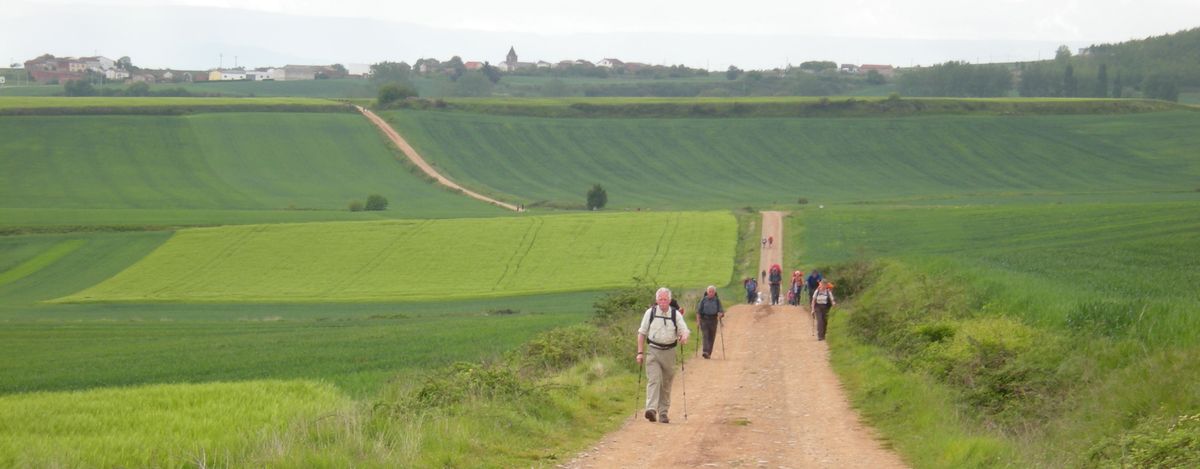‘Walking the Camino’ doc follows pilgrimage across Spain

For more than 1,000 years, people have walked the 500-mile Camino de Santiago pilgrimage across Spain.
Some search for a trip closer to heaven. Others seek a path out of hell.
“I had been engaged to be married, and I had this whole image that I would get married and have kids and settle down,” said filmmaker and TV producer Lydia B. Smith of Portland.
“When it was clear it wasn’t the right fit, I broke it off and went to do the Camino. It came to me: This is what I need to do.”
After her journey in 2008, she was driven to create the documentary “Walking the Camino: Six Ways to Santiago,” which follows six individuals or pairs in May 2009, including co-producer Annie O’Neil.
Whether it’s performed for spiritual or secular reasons, the monthlong walk often changes people.
“Sometimes, these lessons strengthen us for the same type of lessons that come in the future,” O’Neil said. “It’s almost like a muscle. We get a little stronger, so the next time, we can go through a little more gracefully.”
The walk started in the ninth century as penance or spiritual purification for pilgrims traveling to the cathedral in the city of Santiago de Compostela, where the remains of St. James the Greater are thought to have been buried.
Although many routes may be traveled on the Camino (Spanish for path or way), the movie follows the trek that begins in St. Jean-Pied-du-Port in southern France and crosses northern Spain.
Along the way, the modern pilgrims battled snow and rain. They traveled paved walkways and narrow trails. They climbed mountains and walked through farm fields. They endured injuries and blisters.
“This journey, if it changes you, it is, in and of itself, spiritual,” Portuguese pilgrim Tomas says in the movie.
Early in her trip, O’Neil learned to give up her competitiveness and be more open to people. One day, as she was slowed by painful knee tendinitis, a German acquaintance carried her heavy backpack the entire day.
“I don’t think I’ve ever been that kind to anyone,” she says in the movie as she chokes back tears. “I just feel very humbled.”
Except for O’Neil, Smith encountered her subjects during the walk:
Canadians Jack and Wayne are longtime friends. Wayne is still struggling with the death of his wife; Jack is an Episcopal priest who presided at the funeral.
Misa, from Denmark, came to do some soul-searching. She fell in step with William, a Canadian who could match her brisk pace, and soon they found more than stride in common.
Sam, a Brazilian woman, had hit bottom. After being fired from her job, she discarded her medication for depression and her hard-drinking boyfriend in hopes of finding direction in her life.
Tomas, from Portgual, was looking for a physical challenge.
Tatiana, a 26-year-old French single mother, had hopes of becoming closer to God. She took along her rambunctious 3-year old son and her free-spirited brother.
And the walk offers lessons that translate to daily life, O’Neil said.
“I think we can be kinder to one another, we can connect with one another. I think we can help one another and be helped by one another more. The Camino makes it an extreme situation, so that happened naturally and pretty easily.
“If we wake up a little bit, turn away from technology and our daily habits a little bit, we can live a much happier life, and a much more fulfilling life, right where we are.”